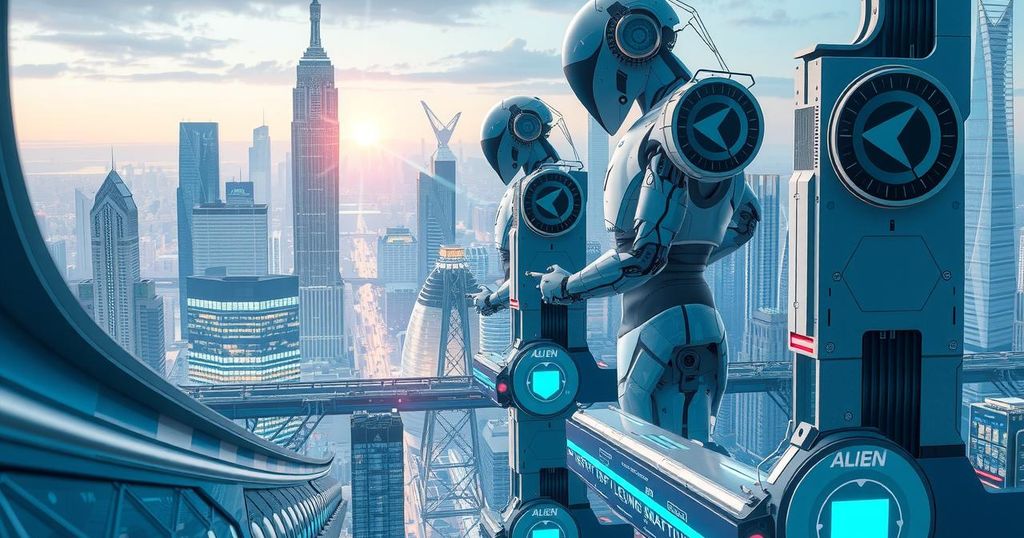AI
” DORR, ADAM DORR, ARTIFICIAL INTELLIGENCE, DO, DORR, DUBLIN, DUN LAOGHAIRE, DÚN LAOGHAIRE, EMPLOYMENT, ETHICS, EUROPE, GOVERNMENT POLICY, GUARDIAN, IRELAND, JAMES ARBIB, KODAK, LEADERSHIP, LOS ANGELES, NORTH AMERICA, PUBLIC SERVICES, RETHINKX, TONY SEBA, UNITED STATES, UNIVERSITY OF CALIFORNIA, UNIVERSITY OF CALIFORNIA,
Nina Oliviera
0 Comments
Futurist Adam Dorr Predicts Robots Will Disrupt Labor Markets
- Adam Dorr predicts robots will soon dominate labor markets.
- By 2045, human labor could be largely obsolete due to AI.
- Dorr warns of increasing inequality or unprecedented abundance.
- Historical trends indicate a swift rise of dominant technologies.
- Humans may eventually find themselves sidelined in many jobs.
Robots and AI Set to Disrupt Labor Markets by 2045
Adam Dorr is a name you might want to remember if the future of labor concerns you. He presents a bold vision of technological advancement, suggesting that robots and artificial intelligence are on track to dominate our work landscape within the next generation. Many professions, he claims, are on borrowed time, as machines are poised to outperform human workers—significantly cutting costs and improving efficiency. Dorr’s research team has delved into centuries of tech transformations and believes that by 2045, the changes will not just shake but indeed shatter the very foundation of the labor market.
A Mix of Optimism and Ominous Predictions
Dorr, who holds a PhD from UCLA and leads the nonprofit RethinkX, laid out his predictions during his recent talk at the Dargan Forum in Dublin. His ominous message is clear: nearly every industry will see humanoid robots powered by advanced AI, rendering human labor nearly obsolete. But there’s a twist to his tale. Despite the grave implications, he also offers a glimpse of optimism, claiming that if approached correctly, these changes could foster unprecedented levels of abundance for humanity. However, he warns, mishandling this era could lead to vast inequality and concentrated power among a few.
Historical Patterns Reinforce Risks of Job Loss
Dorr emphasizes that rapid technological changes aren’t just on the horizon; they’re already arriving at breakneck speed. History has shown consistent patterns across over 1,500 technological revolutions, wherein once a breakthrough claims a tiny share of the market, it swiftly escalates to dominance within 15 to 20 years. He stresses that people, as workers, don’t have a lot of time to prepare for this impending shift. Though some roles may see temporary adaptations—humans working alongside robots—he ultimately believes the machines will soon outpace us, leaving many stranded in joblessness.
In summary, Adam Dorr paints a future wherein robots and AI dominate labor markets within the next two decades. The potential for both immense wealth and social inequality hangs in the balance, depending on how society chooses to navigate these changes. Dorr stresses the urgency of preparing for this transformation, urging for new systems of value and distribution to be urgently developed before it’s too late.




Post Comment